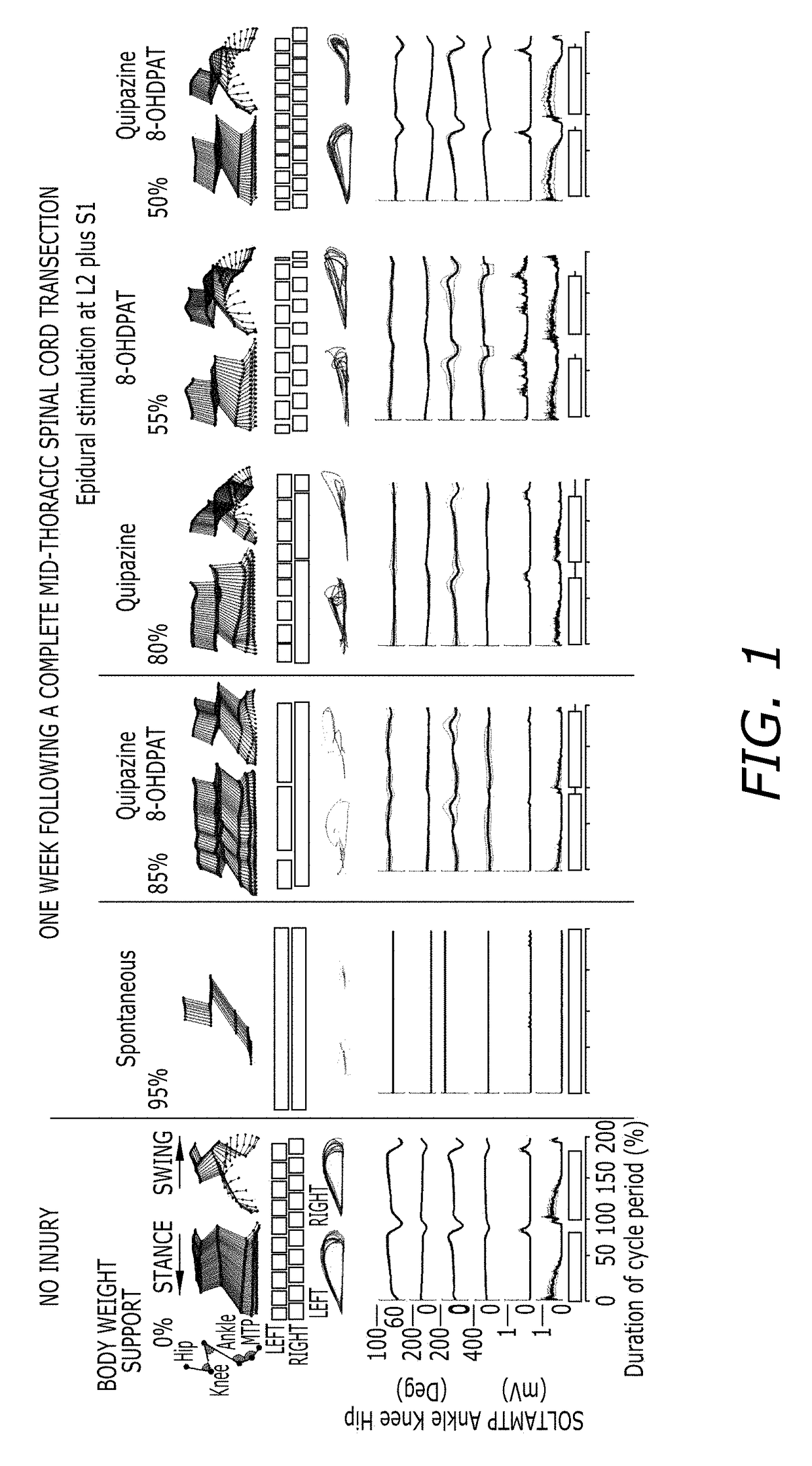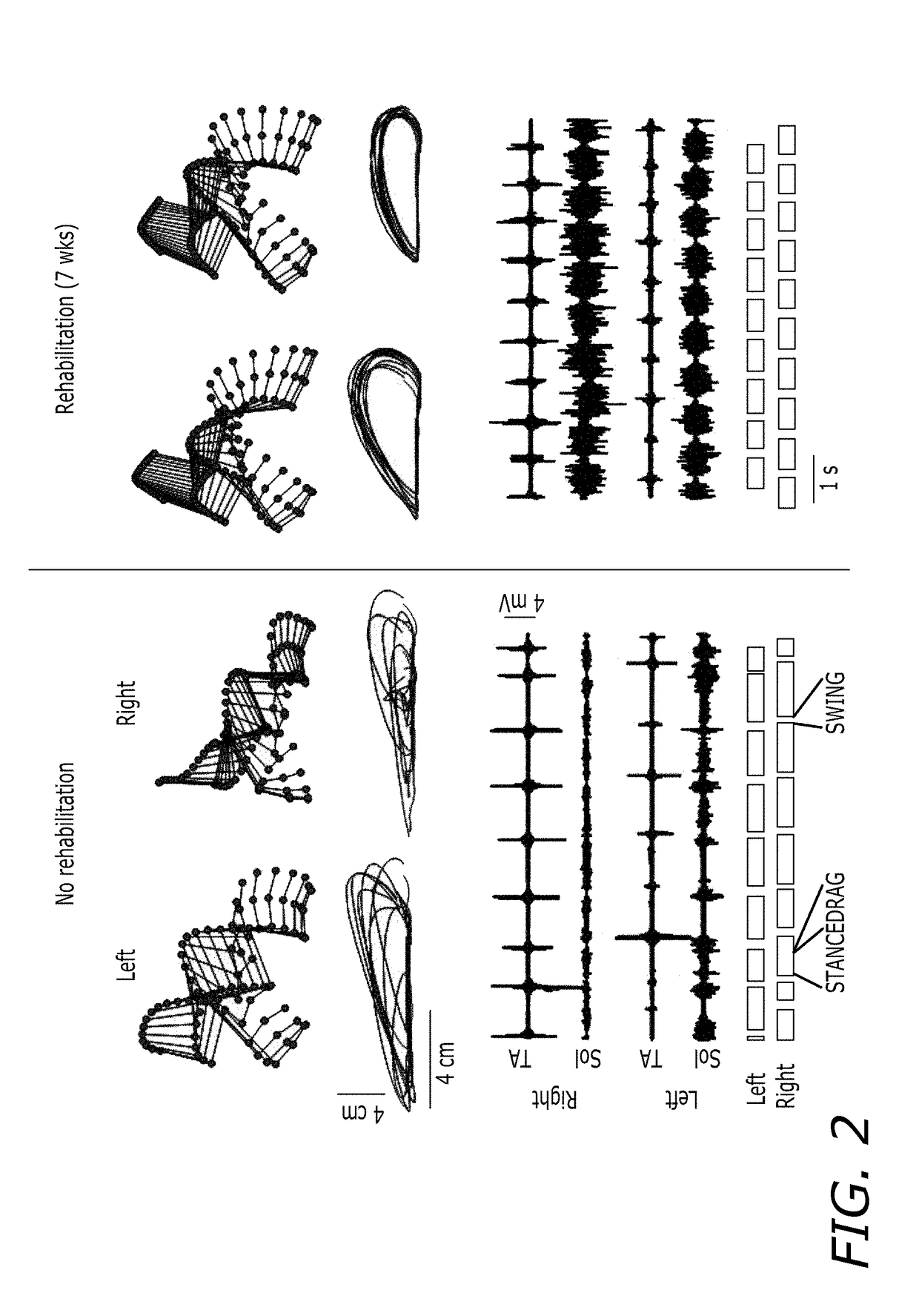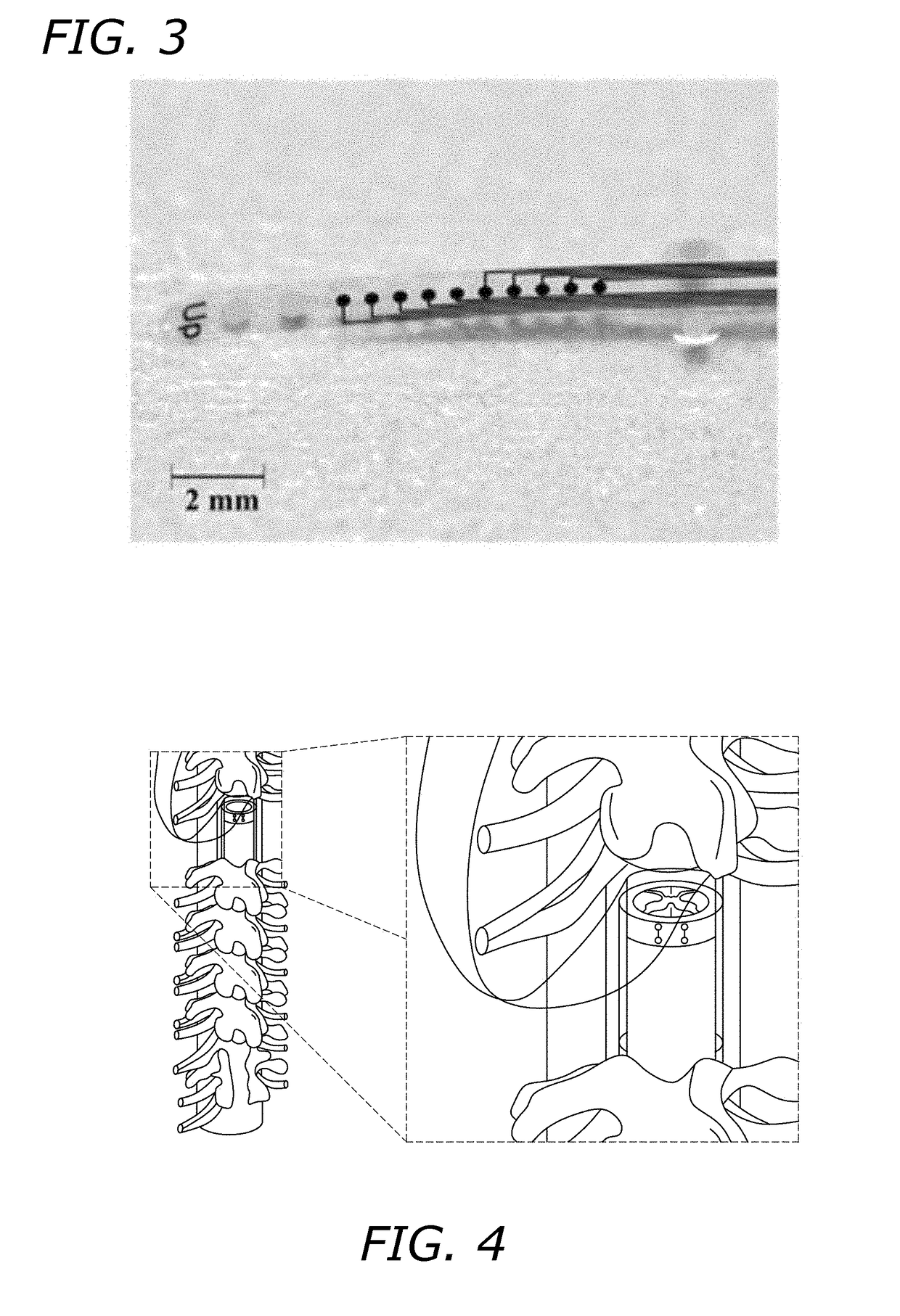Epidural stimulation for facilitation of locomotion, posture, voluntary movement, and recovery of autonomic, sexual, vasomotor, and cognitive function after neurological injury
a neurological injury and epidural stimulation technology, applied in the field of neurological rehabilitation for injury and disease, can solve the problems of inability to train individuals with clinically complete sci, no general accepted evidence, and no one has shown the ability to regain voluntary movements, recover autonomic, sexual, vasomotor, and cognitive function, etc., to facilitate recovery and improve autonomic control
- Summary
- Abstract
- Description
- Claims
- Application Information
AI Technical Summary
Benefits of technology
Problems solved by technology
Method used
Image
Examples
example 1
Epidural Stimulation of the Lumbosacral Spinal Cord Enables Independent Standing, Voluntary Movement, and Assisted Stepping in a Paraplegic Human
[0124]This example demonstrates that the human spinal cord circuitry has the ability to generate postural and locomotor patterns without supraspinal motor input. This capability and voluntary movement can be manifested when the excitability of these networks is modulated by epidural stimulation at a level that enables proprioceptive input to provide a source of neural control to elicit the motor pattern appropriate for the task.
Introduction
[0125]The mammalian spinal cord can generate locomotor output in the absence of input from the brain. See Grillner S., Neurobiological bases of rhythmic motor acts in vertebrates, Science, 228:143-149 (1985); and Rossignol S, Barriere G, Frigon A, Barthelemy D, Bouyer L, Provencher J, et al., Plasticity of locomotor sensorimotor interactions after peripheral and / or spinal lesions, Brain Res Rev, 57(1):228...
example 2
Sub-Threshold Spinal Cord Stimulation Facilitates Spontaneous Motor Activity
[0171]Electrical enabling motor control (eEmc) combined with spontaneous cage activity may increase the frequency and level of activation of the locomotor circuits in paralyzed rats. Spontaneous cage activity was recorded using a specially designed swivel connector to record EMG signals and an IR based camcorder to record video.
[0172]The spinal rats initially were very lethargic in their cages showing little movement. Without eEmc, the rats remained rather inactive with the torso rarely being elevated from the cage floor. When the rats used their forelimbs to move, the hindlimbs were extended and dragged behind with little or no flexion. In contrast, with eEmc the rats were highly active and the hindlimbs showed robust alternating flexion and extension resulting in step-like movements during forelimb-facilitated locomotion and often would stand using the sides of the cages as support. The mean and summed int...
PUM
 Login to View More
Login to View More Abstract
Description
Claims
Application Information
 Login to View More
Login to View More - R&D
- Intellectual Property
- Life Sciences
- Materials
- Tech Scout
- Unparalleled Data Quality
- Higher Quality Content
- 60% Fewer Hallucinations
Browse by: Latest US Patents, China's latest patents, Technical Efficacy Thesaurus, Application Domain, Technology Topic, Popular Technical Reports.
© 2025 PatSnap. All rights reserved.Legal|Privacy policy|Modern Slavery Act Transparency Statement|Sitemap|About US| Contact US: help@patsnap.com



